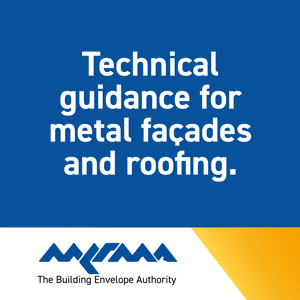Delivering more Passivhaus housing
- Specify & Build
- 2 days ago
- 3 min read
Tony Ruth, Regional Sales Manager at the A.Proctor Group, looks at how Ireland’s biggest developer is tackling the challenge of increasing the percentage of houses that meet the Passivhaus standard.
The UK Passivhaus Trust has set its sights on 10% of all new housing achieving the standard in 10 years’ time, compared to the current figure of 1%. High energy bills are being credited with increasing uptake of the standard recently, but are lawmakers and developers ready to support further adoption?

Pipers Square in Charlestown, Dublin, is one of four projects currently under construction by Cairn Homes, Ireland’s largest housebuilder. Alongside the other three sites, Pipers Square represents the company’s first foray into delivering residential accommodation to the Passivhaus standard. Over 1,700 units are expected to be delivered by the first half of 2026.
Building regulations in Ireland are already quite onerous, setting a nearly zero energy building (NZEB) standard. This means the gap between the regulations and Passivhaus is not as significant as it might be elsewhere, increasing the possibility that an existing specification can be adapted without significant design revisions. Irish developers are used to meeting the low rates of airtightness required by the regulations, and mechanical ventilation with heat recovery (MVHR) is specified as standard on many projects.
The same cannot be said in the UK, where less stringent airtightness requirements – combined with an over-reliance on mechanical extract in kitchens and bathrooms only – are much less suited to a Passivhaus-level of specification. The Scottish government is in the process of consulting on the adoption of a Passivhaus-equivalent standard for its building regulations. However, the impending Future Homes Standards in England and Wales are relying on decarbonisation of the national grid to help meet broader net zero targets.

The role of the developer
Choosing to make the shift to Passivhaus is as much about culture and attitude as anything else. A feasibility study carried out by Cairn Homes, looking at what they would need to do over and above an NZEB specification, allowed them to make the commitment to Passivhaus. The study found that “Cairn’s quality assurance focus and approach to meeting the NZEB standard…made passive house surprisingly attainable”.
As such, their apartment building specifications required no extra insulation, and the company already used MVHR. An upgrade to triple glazed windows was required. The A.Proctor Group’s Wraptite membrane was already part of the Pipers Square facade specification. As an external air barrier, it plays an important role in delivering low air permeability, whether for NZEB regulations or for meeting the Passivhaus standard.
That Wraptite already featured in the external wall build-up is a testament to the existing quality of Cairn Homes. The membrane is a Passivhaus-certified component, which reinforces its credentials as a high-quality product suitable for use in Passivhaus buildings, and helps to show why the move to Passivhaus was less complicated than it could have been.

Assessing moisture risks
Wraptite is both airtight and vapour permeable. Positioning it to the outside of the external wall structure moves the airtightness barrier away from the internal services zone, simplifying detailing and reducing the number of penetrations. At the same time, its vapour permeability allows the passage of moisture vapour and helps to eliminate any condensation risk.
Cairn Homes worked with the A.Proctor Group’s technical services team to fully assess the external wall build-up for any moisture risks. The developer chose to explore several options for internal vapour control layers, including the possible effect of using a vapour variable membrane with the vapour permeable mineral wool insulation.
A comprehensive condensation risk analysis was carried out using WUFI software. The results showed that the proposed build-up was not subject to any moisture risk due to interstitial condensation and could contribute to delivering the high standards of comfort that are a hallmark of the Passivhaus standard.
.png)























































.png)

